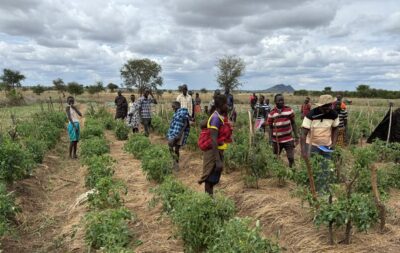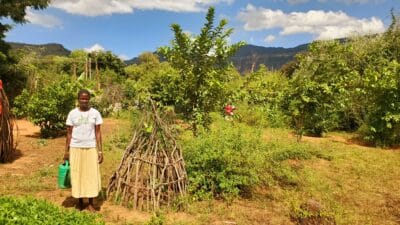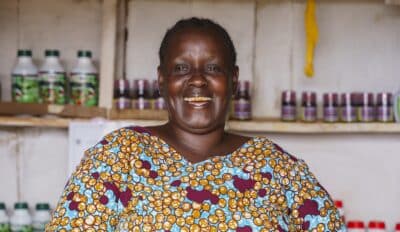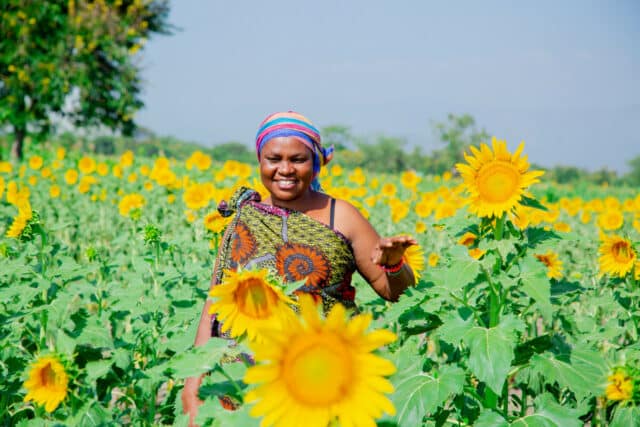Expert view
20 May 2013
Postcard from Ethiopia: Eleven countries, one REDD+ forest challenge
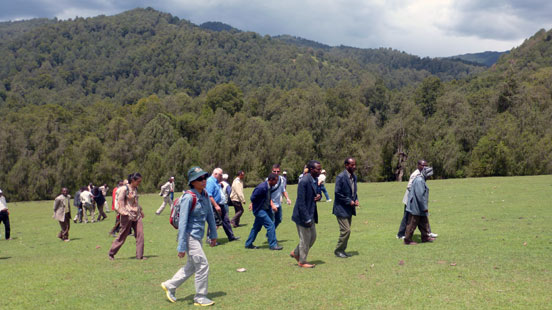
Photo: A group of foresters visiting Farm Africa’s Bale Mountains forest management project
By Michelle Winthrop
Eleven countries, one challenge, and some good old Ethiopian hospitality: visitors from Africa and elsewhere gather in Hawassa to grapple with the challenges of REDD+
The challenge of putting in place REDD+ schemes that genuinely benefit poor people is almost head-mashingly complicated. Getting the technical stuff right is hard enough – figuring out how much forest to use as your reference and where, objectively tracking how many tonnes of carbon emitted you have prevented, navigating the rules and regulations around getting that certified internationally so you can sell the credits.
That’s before you even start to consider how communities are going to benefit from the money generated, how you continue to make it worth their while not to chop down trees, and how you help get the right organisations to keep the whole thing going – and protect those forests long term.
World Bank forest management event
That’s why we were privileged to be partners at a major World Bank event in Ethiopia a few weeks ago, to bring together foresters from governments, NGOs, the private sector, and researchers to crack some of these difficult questions.
We were asked to take them to the field, to let them ‘see for themselves’ what difference it can make to put communities in the driving seat of forest management. That part was always going to be easy – even for a bunch of seasoned global forest experts meeting the Bale communities couldn’t fail to inspire. The landscape couldn’t fail to create awe. And of course, they complained that the World Bank didn’t schedule a long enough field visit.
I, of course, stupidly opted to give the crowd ‘Amharic 101’ in my opening address – which if you’ve ever heard Amharic was clearly a stupid idea!
Private sector investment in REDD+
But it was a chance for me to raise some of the pressing issues we’re grappling with as we roll out our very own REDD+ scheme in Bale this year.
- How can we really start to measure the extra benefits of our forest work – more than just the carbon protected?
- How can you get international markets to pay for lives improved through better management of the environment – payment for results, if you will?
- And what do we need to do to really help the Ethiopian Government attract the right kind of private sector investment that will protect the forests?
What a stimulating day it was – we heard positive experiences and challenges from Brazil, Democratic Republic of Congo, Cameroon, Madagascar, Liberia, Uganda, Tanzania, Indonesia, Kenya, Nigeria, and, of course Ethiopia.
Some interesting private sector models, some fascinating experiences of doing this in sub-national jurisdictions (the way Ethiopia is considering for Oromiya Region), and some relevant work on trying to create incentives where there are transient refugee populations, as there are in Benishangul, where we also work.
But what was clear to me was that Ethiopia is far from alone in figuring this stuff out, and that’s what makes these exchanges so valuable.
More about forest management in the Bale mountains
More about our work expanding forest protection in other parts of Ethiopia
– Michelle is Farm Africa’s country director in Ethiopia
